

News
Tesla AI Day News Roundup: Optimus, FSD Beta & Dojo updates
Tesla AI Day has officially kicked off. Guests have started entering the venue already.
AI Day is an event mainly held to recruit talented people and welcome them to Tesla. However, it is still a Tesla event, so everyone expects some product surprises and updates, specifically about the company’s humanoid robot, Optimus, Dojo, and Full Self-Driving.
Teslarati will be closely following the event. This is our news roundup for 2022 AI Day, covering key information Tesla reveals at the event.
Photos and Videos aren’t allowed during the event from attendees. However, guests were able to capture some cool photos of a Tesla Semi with Cybertruck graffiti, a literal fork on the road, and some other cool set ups around the premises.
Tesla’s former AI Head, Andrej Karpathy, has brought out the (metaphorical) popcorn. His brief “comment” hints that AI Day 2022 might be as exciting as everyone anticipates.
Elon Musk set some expectations about Optimus, reminding everyone that during AI Day 2021, Tesla’s humanoid bot was just “a guy in a robot suit.” Musk also laid out the topics for AI Day 2022, saying that Tesla will talk about Autopilot and Dojo, too.
Optimus Takes the Stage
Tesla didn’t waste any time and brought out Optimus immediately. According to a Tesla mechanical engineer, AI Day 2022 is the first time Optimus has been “let out”– so to speak– without any external support.
“This is literally the first time the robot has walked on stage without a tether, on stage tonight,” Musk added. “The robot can actually do a lot more than we showed you. We just don’t want it to fall on its face.”
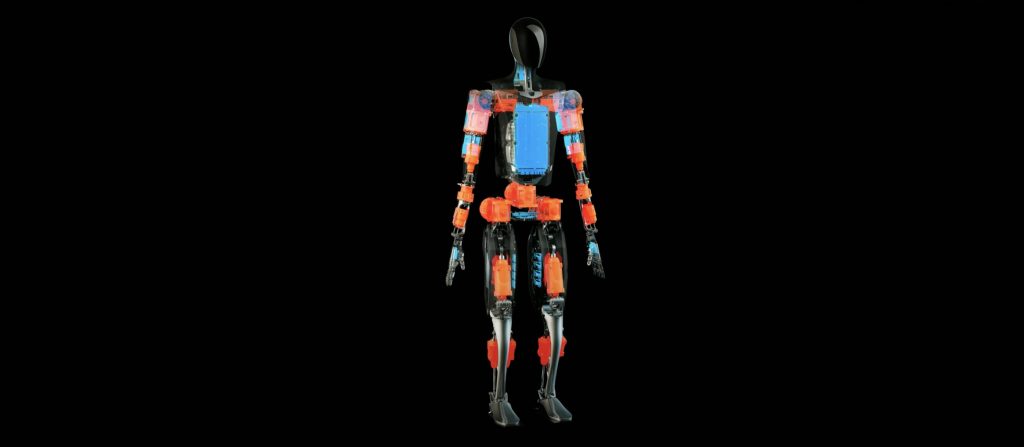



Tesla reveals videos of Optimus or in this case “Bumble-Cee” doing “work” around the Tesla office. Optimus carried a box from one area to another, watered plants, and even worked at the factory for a bit. The Tesla bot’s vision is very similar Autopilot.
Tesla also revealed Optimus’ potential final unit one production design. “Our goal is to make a useful humanoid robot as soon as possible,” said Elon Musk. The Tesla CEO also shared that Tesla aims to make Optimus’ price less than $20,000 or cheaper than a car.
Tesla is using some of the technology in its car in Optimus’ body as well, such as the battery pack, cooling system and more. The company also uses that same technology it uses for its cars to simulate Optimus’ movements and reactions to external collisions.

Tesla is basing Optimus’ body design on the human body. The company has been closely studying the structure of the human body while making the humanoid robot’s overall design. For instance, Tesla designed Optimus’ hands with the idea that factories worldwide are designed ergonomically, or optimized for the human hand. Teslarati briefly covered the significance of robots’ hands in a previous article, linked below.
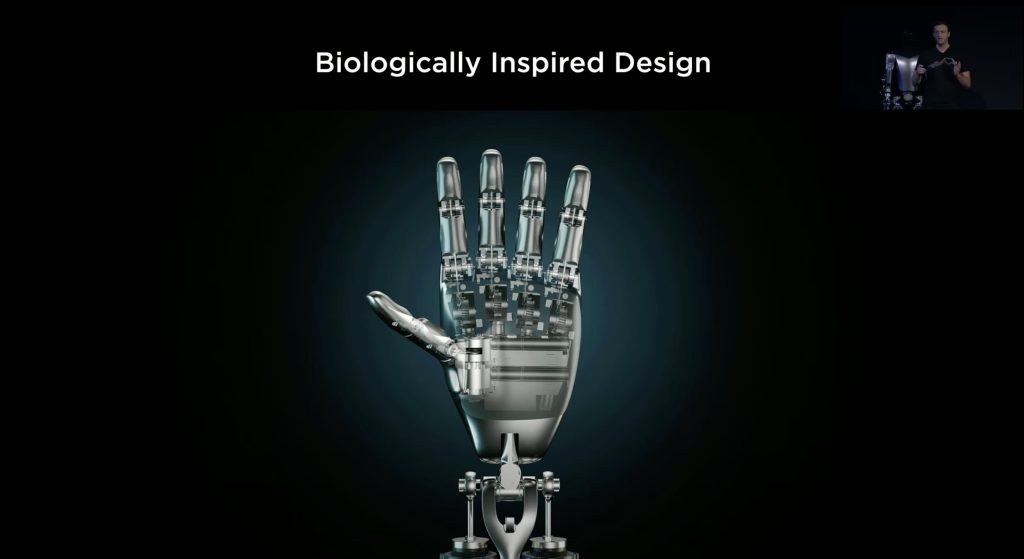
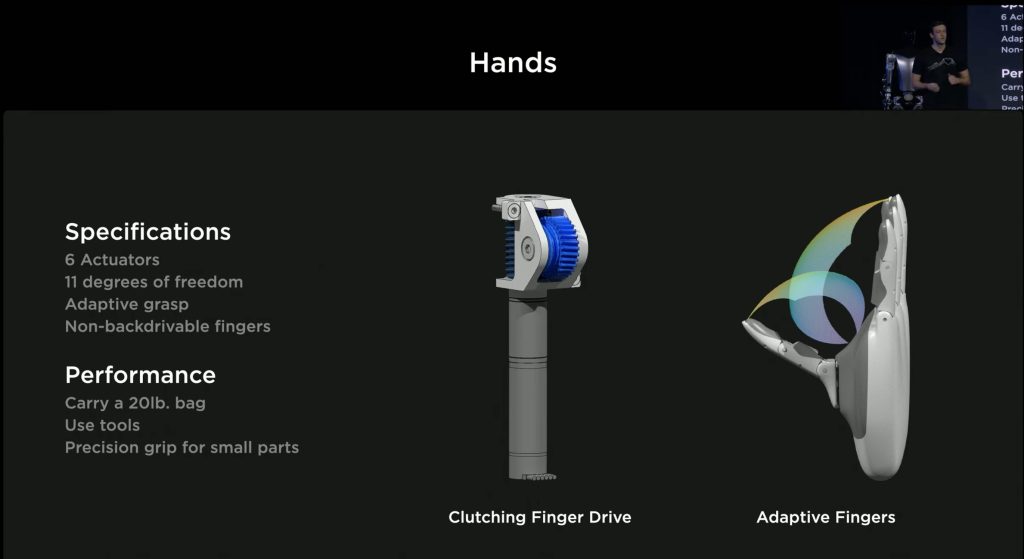
FSD Beta Updates
The Tesla FSD Beta now has 160,000 customers, compared to 2,000 customers in 2021. Tesla is expected to release v.10.69.2.3 after AI Day, although a precise roll out date has not be announced yet.

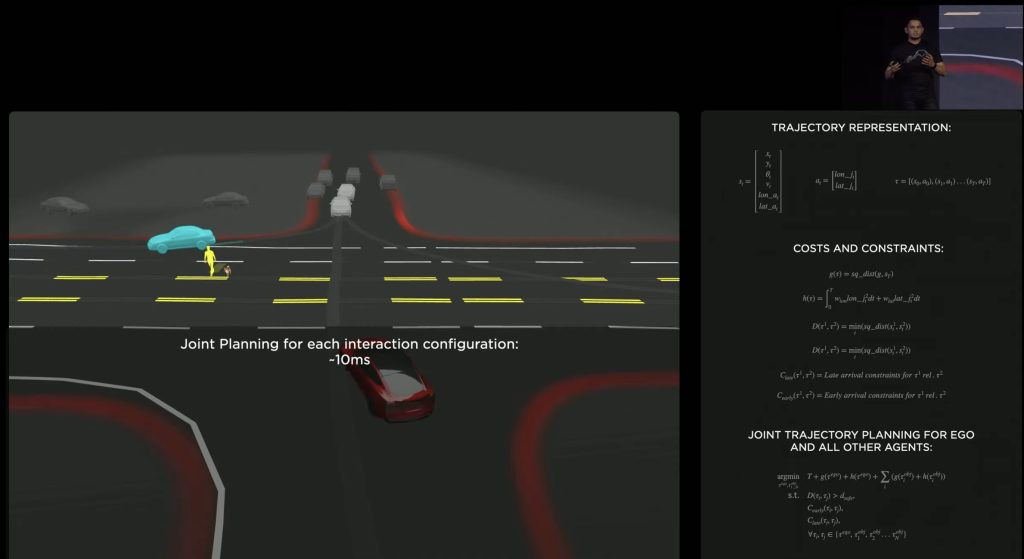
Tesla explained the progress its made with Full Self-Driving Beta. The Tesla FSD experts explained how the Full Self-Driving makes decision to AI day guests and the role that customer data played to refine the software. The company also explained occupancy and the role it plays with 3D mapping and providing a birds-eye-view for the car. Tesla is working hard to optimize its video model training as well.
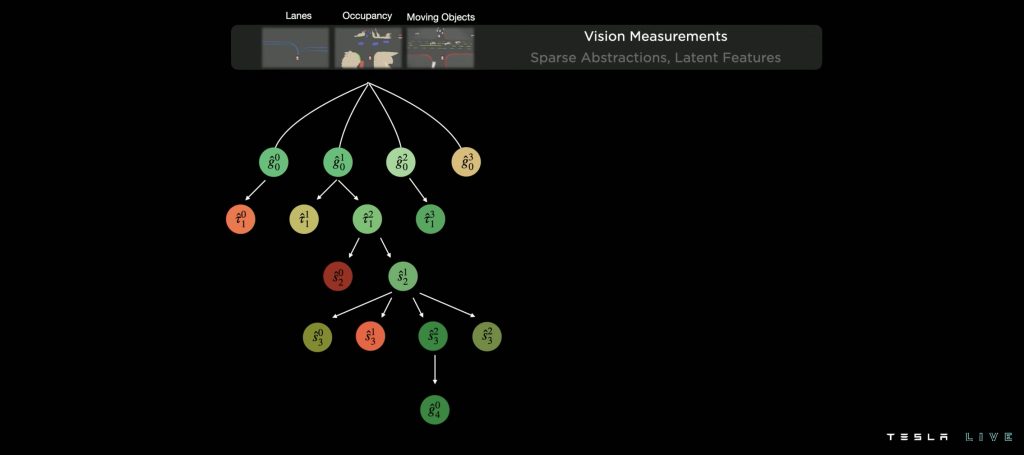

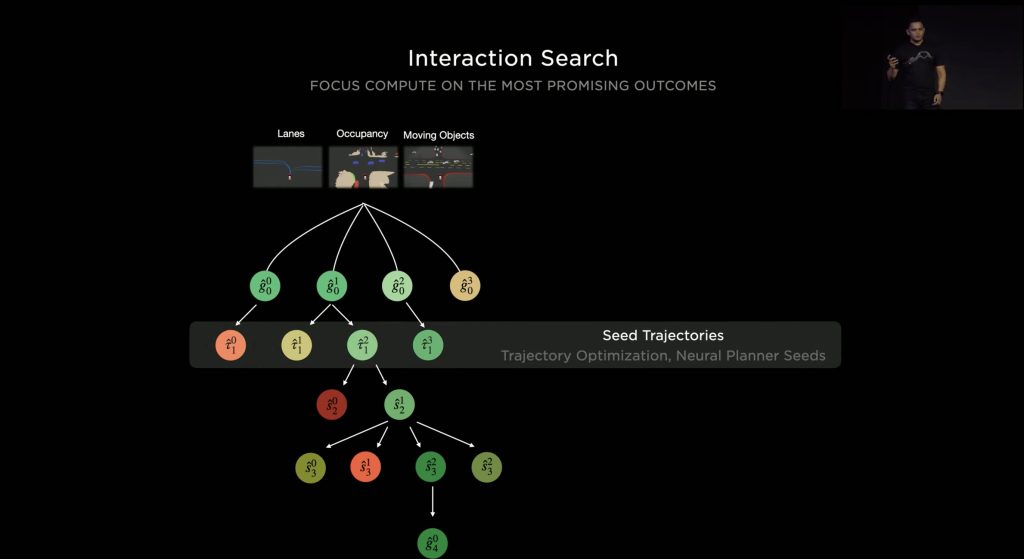
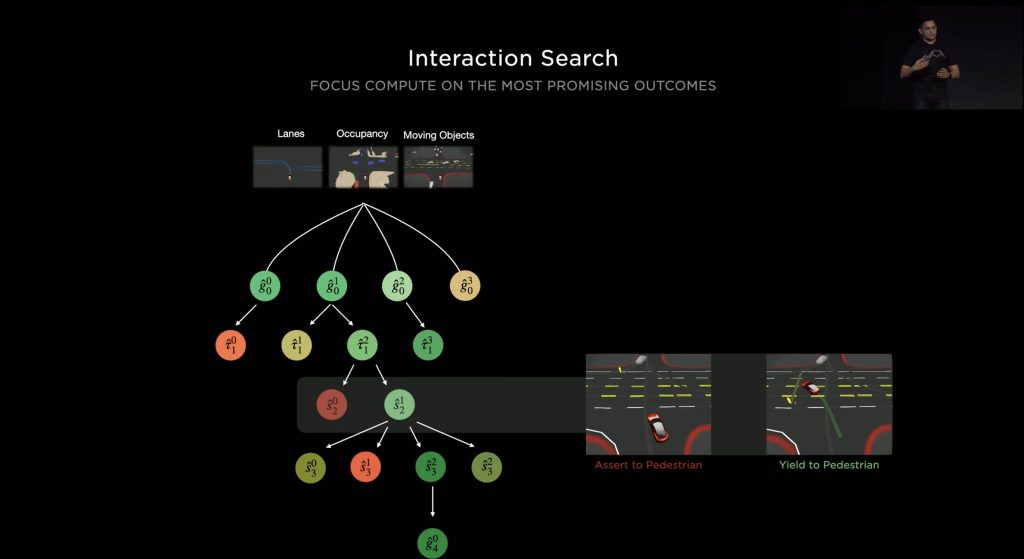


Tesla also talked a lot about its FSD Lane Networks during AI Day 2022. In the past few weeks, Teslarati has received reports from FSD testers, who specifically brought up issues with lane selection. To see “under the hood”–so to speak–somewhat explains the lane issues FSD testers experience on the road.
After multiple test loops and drives, there’s really just one main problem remaining for me at this point on 10.69.2, it’s significant, and that is lane selection,” noted long-time FSD tester Les.
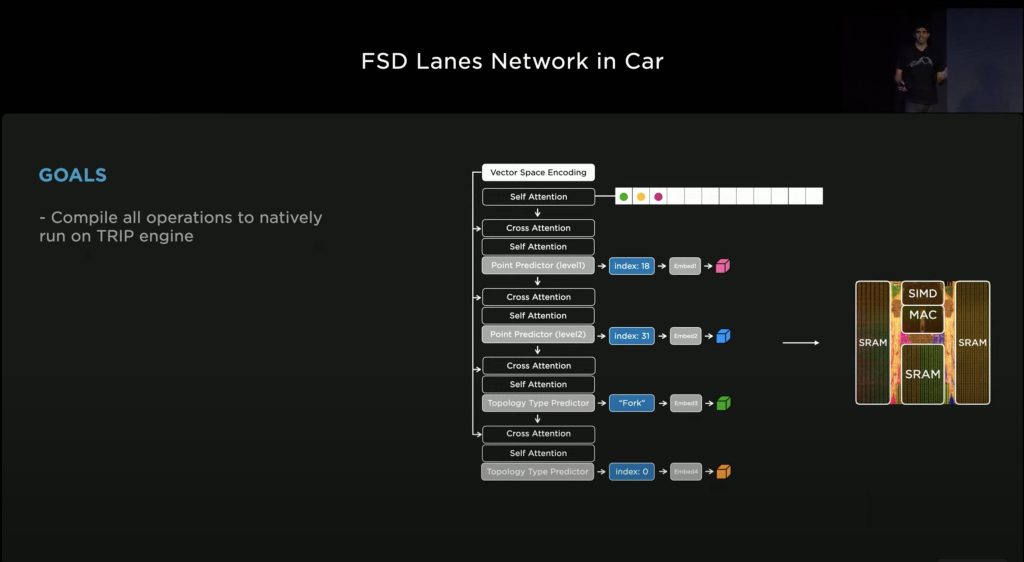

Tesla has developed a new auto-labeling machine to help with 3D labeling. The FSD experts explained how the software uses other clips to fill out the picture under certain conditions when the camera shows an unclear picture.

Tesla also talked a bit about simulation. The experts showed how it could simulate worlds or environments, using the data gathered from its fleet. It revealed a simulation of San Francisco that was created within two weeks by one employee. Tesla may update a simulated world quickly and as updated develop.

Dojo Updates
Tesla’s goal with Dojo is to build a single accelerator. A key step to realizing its goals was its training tile, which it unveiled during AI Day 2021. Tesla has been trying to figure out how to make its Dojo design scalable and has run into challenges along the way. However, the company’s “fail fast” mindset has helped it push through road blocks and move forward.



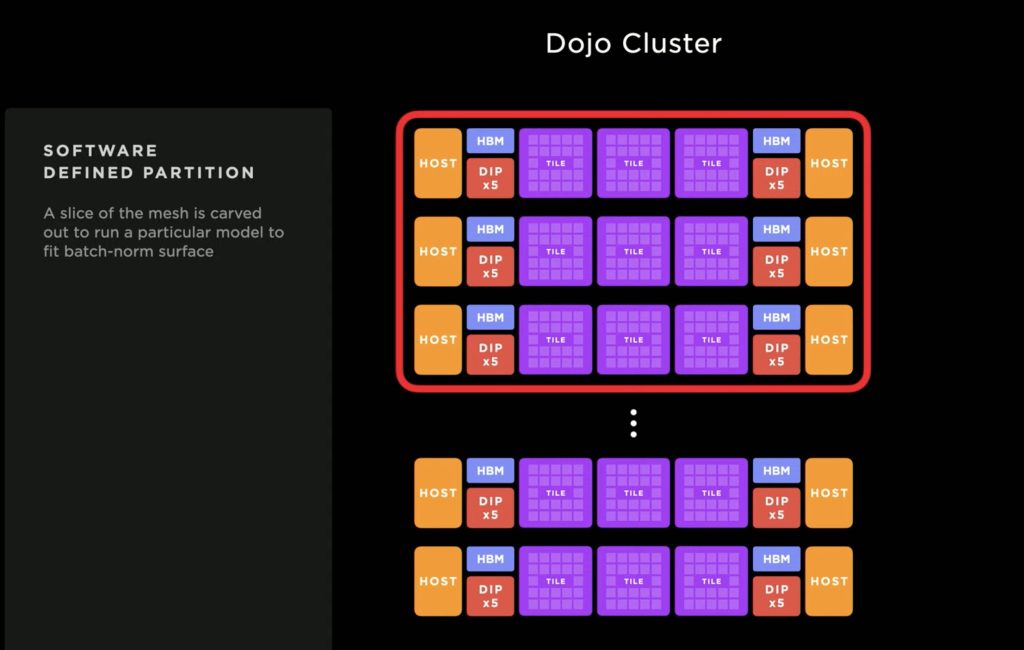
The Dojo team showed images of a Cybertruck and Semi running on Mars using stable diffusion achieved through Dojo.

Tesla experts explained that Dojo reduced work that would usually take months to a single week.

Tesla plans to build its first Exapod by 2023, which is expected to significantly increase its autolabeling output . It will be the first Exapod of 7 that Tesla plans to build in Palo Alto.

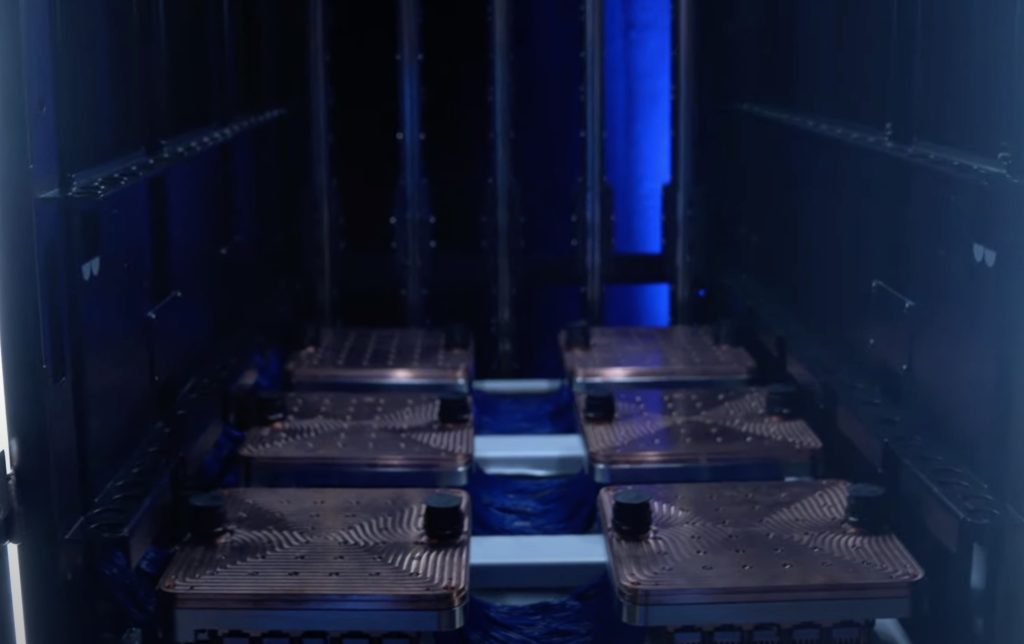
Tesla ended AI Day 2022 by answering questions from attendees. Tesla hopes that through their thorough explanations during the event, the company would be seen as more than an automaker. And, of course, Tesla hopes that its AI Day 2022 presentation also entices talented individuals to join the company.
The Teslarati team would appreciate hearing from you. If you have any tips, contact me at maria@teslarati.com or via Twitter @Writer_01001101.
Elon Musk
Tesla analysts believe Musk and Trump feud will pass
Tesla CEO Elon Musk and U.S. President Donald Trump’s feud shall pass, several bulls say.

Tesla analysts are breaking down the current feud between CEO Elon Musk and U.S. President Donald Trump, as the two continue to disagree on the “Big Beautiful Bill” and its impact on the country’s national debt.
Musk, who headed the Department of Government Efficiency (DOGE) under the Trump Administration, left his post in May. Soon thereafter, he and President Trump entered a very public and verbal disagreement, where things turned sour. They reconciled to an extent, and things seemed to be in the past.
However, the second disagreement between the two started on Monday, as Musk continued to push back on the “Big Beautiful Bill” that the Trump administration is attempting to sign into law. It would, by Musk’s estimation, increase spending and reverse the work DOGE did to trim the deficit.
Every member of Congress who campaigned on reducing government spending and then immediately voted for the biggest debt increase in history should hang their head in shame!
And they will lose their primary next year if it is the last thing I do on this Earth.
— Elon Musk (@elonmusk) June 30, 2025
President Trump has hinted that DOGE could be “the monster” that “eats Elon,” threatening to end the subsidies that SpaceX and Tesla receive. Musk has not been opposed to ending government subsidies for companies, including his own, as long as they are all abolished.
How Tesla could benefit from the ‘Big Beautiful Bill’ that axes EV subsidies
Despite this contentious back-and-forth between the two, analysts are sharing their opinions now, and a few of the more bullish Tesla observers are convinced that this feud will pass, Trump and Musk will resolve their differences as they have before, and things will return to normal.
ARK Invest’s Cathie Wood said this morning that the feud between Musk and Trump is another example of “this too shall pass:”
BREAKING: CATHIE WOOD SAYS — ELON AND TRUMP FEUD “WILL PASS” 👀 $TSLA
She remains bullish ! pic.twitter.com/w5rW2gfCkx
— TheSonOfWalkley (@TheSonOfWalkley) July 1, 2025
Additionally, Wedbush’s Dan Ives, in a note to investors this morning, said that the situation “will settle:”
“We believe this situation will settle and at the end of the day Musk needs Trump and Trump needs Musk given the AI Arms Race going on between the US and China. The jabs between Musk and Trump will continue as the Budget rolls through Congress but Tesla investors want Musk to focus on driving Tesla and stop this political angle…which has turned into a life of its own in a roller coaster ride since the November elections.”
Tesla shares are down about 5 percent at 3:10 p.m. on the East Coast.
Elon Musk
Tesla scrambles after Musk sidekick exit, CEO takes over sales
Tesla CEO Elon Musk is reportedly overseeing sales in North America and Europe, Bloomberg reports.

Tesla scrambled its executives around following the exit of CEO Elon Musk’s sidekick last week, Omead Afshar. Afshar was relieved of his duties as Head of Sales for both North America and Europe.
Bloomberg is reporting that Musk is now overseeing both regions for sales, according to sources familiar with the matter. Afshar left the company last week, likely due to slow sales in both markets, ending a seven-year term with the electric automaker.
Tesla’s Omead Afshar, known as Elon Musk’s right-hand man, leaves company: reports
Afshar was promoted to the role late last year as Musk was becoming more involved in the road to the White House with President Donald Trump.
Afshar, whose LinkedIn account stated he was working within the “Office of the CEO,” was known as Musk’s right-hand man for years.
Additionally, Tom Zhu, currently the Senior Vice President of Automotive at Tesla, will oversee sales in Asia, according to the report.
It is a scramble by Tesla to get the company’s proven executives over the pain points the automaker has found halfway through the year. Sales are looking to be close to the 1.8 million vehicles the company delivered in both of the past two years.
Tesla is pivoting to pay more attention to the struggling automotive sales that it has felt over the past six months. Although it is still performing well and is the best-selling EV maker by a long way, it is struggling to find growth despite redesigning its vehicles and launching new tech and improvements within them.
The company is also looking to focus more on its deployment of autonomous tech, especially as it recently launched its Robotaxi platform in Austin just over a week ago.
However, while this is the long-term catalyst for Tesla, sales still need some work, and it appears the company’s strategy is to put its biggest guns on its biggest problems.
News
Tesla upgrades Model 3 and Model Y in China, hikes price for long-range sedan
Tesla’s long-range Model 3 now comes with a higher CLTC-rated range of 753 km (468 miles).
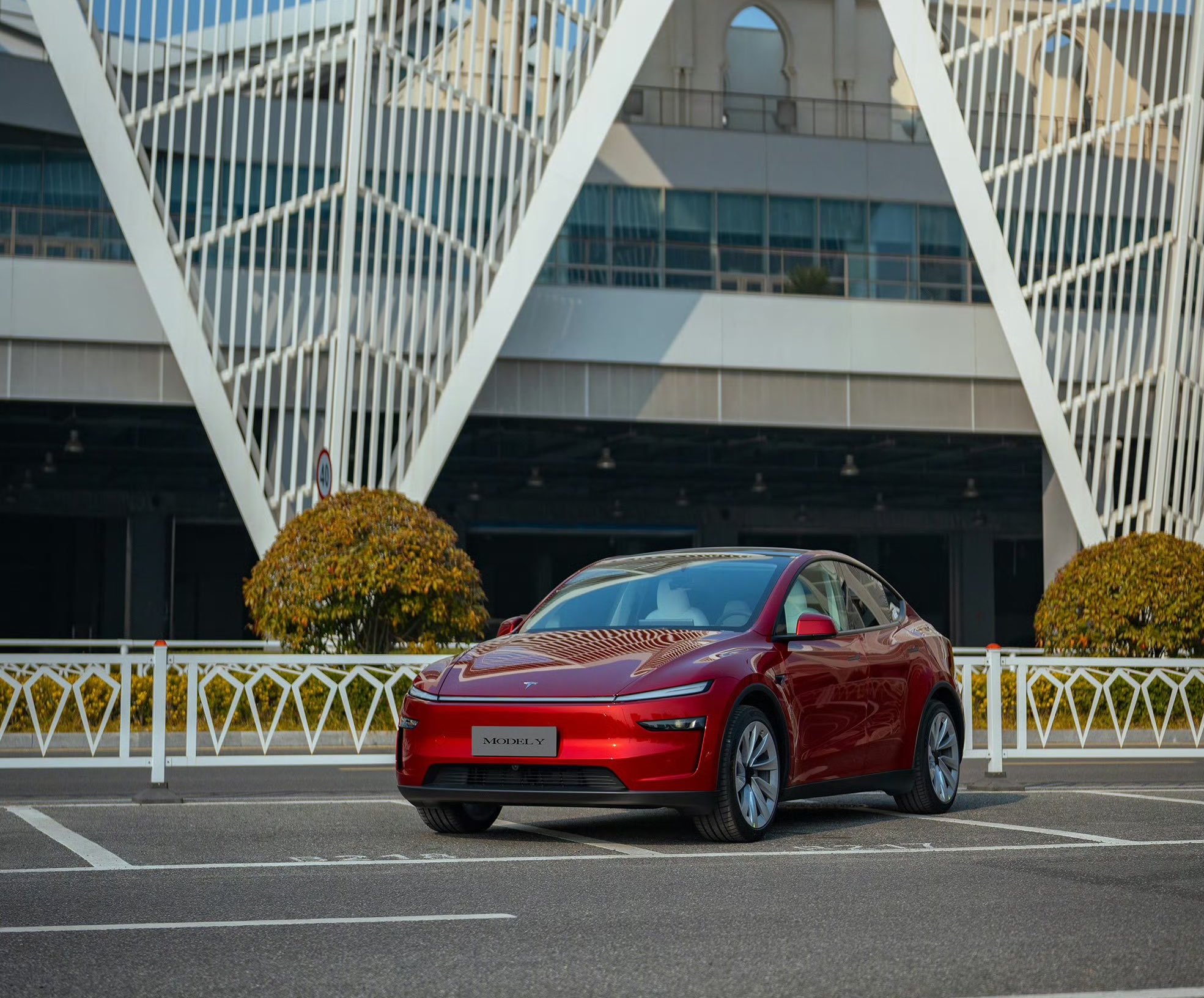
Tesla has rolled out a series of quiet upgrades to its Model 3 and Model Y in China, enhancing range and performance for long-range variants. The updates come with a price hike for the Model 3 Long Range All-Wheel Drive, which now costs RMB 285,500 (about $39,300), up RMB 10,000 ($1,400) from the previous price.
Model 3 gets acceleration boost, extended range
Tesla’s long-range Model 3 now comes with a higher CLTC-rated range of 753 km (468 miles), up from 713 km (443 miles), and a faster 0–100 km/h acceleration time of 3.8 seconds, down from 4.4 seconds. These changes suggest that Tesla has bundled the previously optional Acceleration Boost for the Model 3, once priced at RMB 14,100 ($1,968), as a standard feature.
Delivery wait times for the long-range Model 3 have also been shortened, from 3–5 weeks to just 1–3 weeks, as per CNEV Post. No changes were made to the entry-level RWD or Performance versions, which retain their RMB 235,500 and RMB 339,500 price points, respectively. Wait times for those trims also remain at 1–3 weeks and 8–10 weeks.
Model Y range increases, pricing holds steady
The Model Y Long Range has also seen its CLTC-rated range increase from 719 km (447 miles) to 750 km (466 miles), though its price remains unchanged at RMB 313,500 ($43,759). The model maintains a 0–100 km/h time of 4.3 seconds.
Tesla also updated delivery times for the Model Y lineup. The Long Range variant now shows a wait time of 1–3 weeks, an improvement from the previous 3–5 weeks. The entry-level RWD version maintained its starting price of RMB 263,500, though its delivery window is now shorter at 2–4 weeks.
Tesla continues to offer several purchase incentives in China, including an RMB 8,000 discount for select paint options, an RMB 8,000 insurance subsidy, and five years of interest-free financing for eligible variants.
-

 Elon Musk1 day ago
Elon Musk1 day agoTesla investors will be shocked by Jim Cramer’s latest assessment
-

 News6 days ago
News6 days agoTesla Robotaxi’s biggest challenge seems to be this one thing
-

 News2 weeks ago
News2 weeks agoTesla’s Grok integration will be more realistic with this cool feature
-

 Elon Musk2 weeks ago
Elon Musk2 weeks agoElon Musk slams Bloomberg’s shocking xAI cash burn claims
-

 News2 weeks ago
News2 weeks agoTesla China roars back with highest vehicle registrations this Q2 so far
-

 News2 weeks ago
News2 weeks agoTexas lawmakers urge Tesla to delay Austin robotaxi launch to September
-

 News2 weeks ago
News2 weeks agoTesla dominates Cars.com’s Made in America Index with clean sweep
-

 Elon Musk1 week ago
Elon Musk1 week agoFirst Look at Tesla’s Robotaxi App: features, design, and more




















